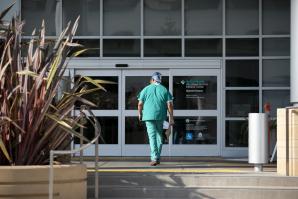In a typical year, new laws usually include changes to pay practices and antidiscrimination measures. But 2020 was anything but typical. Not surprisingly, several 2021 laws focus on issues related to COVID-19.
COVID-19 Exposure
Assembly Bill 685 is a law that primarily requires employers to provide several written notices to employees and employers of subcontracted employees when the employer receives notice of potential COVID-19 exposure. These notices must communicate key information, including actual or potential COVID-19 exposure, COVID-19-related benefits (which may be available to recipients under the law and workplace policies, such as workers’ compensation and paid sick leave), and a notice about cleaning and disinfecting procedures implemented to remedy the hazard caused by the exposure. Employers are allotted one business day to deliver these required notices. As a best practice, organizations should prepare these notices well in advance so they are able to respond quickly if an outbreak occurs.
Workers’ Compensation
A presumption that COVID-19 infection occurred in the workplace for workers’ compensation purposes is addressed in Senate Bill 1159. The law says that if an employee tests positive for COVID-19 during a workplace outbreak (defined as a 14-day period when four or more employees of employers with less than 100 employees or 4 percent or more of employees for employers with more than 100 employees test positive, or the workplace is ordered closed by certain public agencies), there is a rebuttable presumption that the infection is covered by workers’ compensation. The law also requires all employers to notify their workers’ compensation administrator within three business days when the organization “knows or reasonably should know” that an employee has tested positive for COVID-19, regardless of whether there was an outbreak.
Prevention Program
Workplace safety and COVID-19 are most thoroughly addressed in the 21 pages of emergency regulations issued by the California Division of Occupational Safety and Health. The most significant obligation is the requirement for employers to create a written COVID-19 prevention program, including training about COVID-19 and who should be excluded from the workplace when an infected person has been at work. Cal/OSHA also touches on topics not traditionally regulated by the agency, such as requiring employers to maintain an “employee’s earnings, seniority, and all other employee rights and benefits” if that employee must be excluded from work because of COVID-19. Cal/OSHA’s model prevention program, posted on its website, totals 20 pages before employer-specific information is inserted, demonstrating just how extensive these regulations are.
Aaron B. Silva is a partner and chair of the Labor and Employment Law Team at Murphy Austin Adams Schoenfeld LLP. He produces a monthly employment law podcast, “HR Legalcast,” which highlights issues that affect California employers.
–
Stay up to date on the effects of the coronavirus on people and business in the Capital Region: Subscribe to the Comstock’s newsletter today.
Recommended For You

New Law for Leaves
Employers need to adjust for expansion of family leave opportunities in California
Here’s what employers need to know about the new law that
took effect Jan. 1.

California COVID-19 Workers’ Comp Claims Soar
Workers’ compensation claims for COVID-19 have spiked dramatically in the past two months. Those claims could mean more than $2 billion in costs for employers and their insurers.

Back to Business — Not as Usual
Four strategies to help employers avoid litigation as California reopens
Companies can expect to see COVID-19-related employment lawsuits from nearly any corner. These strategies can help mitigate risk.

Governor’s Quandary: Who Should Get California Workers’ Comp Benefits For COVID-19?
Gov. Gavin Newsom is facing intense lobbying from both business and labor as he weighs an executive order that would make it easier for essential workers such as nurses and grocery clerks to get workers’ compensation if they contract COVID-19.




